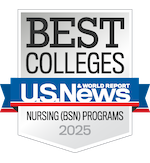About the University of Michigan
Today, the University of Michigan-Ann Arbor is one of the most distinguished universities in the world and a leader in higher education.
Living
Located along the beautiful Huron River, the university consists of five major physical areas - Central Campus, East Campus, North Campus, Medical Campus and South Campus - that total 3,070 acres. University Housing includes numerous residence halls, from undergraduate apartments and family and single graduate units. Nearly all first-year students live in University housing. Residential academic programs such as Michigan Learning Communities and the Munger Graduate Residence encourage students learn and challenge themselves as they come into contact with people, cultures, and ideas from all over the world.
The University community has about 42,000 students in 19 schools and colleges. Students come from all 50 states and more than 100 foreign countries. The University’s faculty, in both the instructional and research tracks, includes many people from around the world and is considered among the best in the country. Undergraduate, graduate, and professional students have a choice of over 1,000 student organizations, thousands of concerts, speakers, films, readings, and sporting events, as well as a wealth of other experiences each year. Looking beyond the local borders of the campus community, more than 480,000 University of Michigan alumni live and work across the globe.
Learning
The University’s research mission had expenditures in fiscal year of 2014 that exceeded $1.3 billion, which is one of the largest expenditure totals among U.S. universities. Students with an interest in research are encouraged to get involved. There are more than 1,000 undergraduate research opportunities on campus.
The University Library System has 19 libraries that hold over 8 million volumes and 70,000 serial titles. The University is a national leader in the development of digital library resources, having digitized over 4.5 million books to date. Museums are open to the public. Research museums that house extensive collections include the Museum of Anthropology, Museum of Paleontology, Museum of Zoology, and the University Herbarium.
Faculty and students conduct hands-on research on a range of critical issues, including health care, energy and the environment, social interventions, education reform and improvement, and many others. By sharing their fundamental knowledge and advancing innovations in technology, scientists and engineers at the University contribute to advances that are transforming lives and that contribute to building the economy of the region, state, and nation. In collaboration with other universities, colleges, and K-12 schools, the University conducts research and provides other services for the benefit of a variety of state, national, and private agencies.






